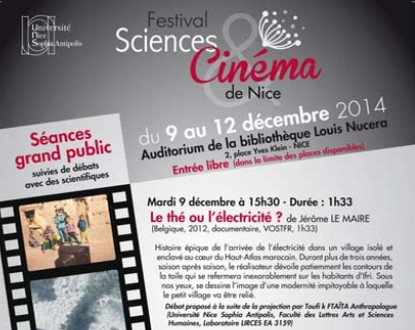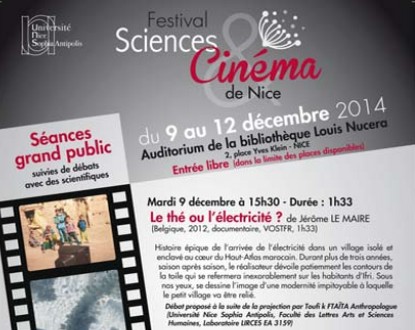The University Nice Sophia Antipolis and the Pollymagoo association are organizing the first Science and Cinema Festival of Nice at the Louis Nucera Library. Film screenings are offered to the general public and school groups, followed by debates with scientists and filmmakers.

The teachers accompanying their students participated in advance in a day of presentation and exchange, integrated into the training plan of the Rectorate of the Academy.
Schedule of public sessions
Wednesday, December 10 at 3 PM: short film session / Duration: 1h24
o HYAS ET STÉNORINQUES by Jean PAINLEVÉ (France, 1927, documentary, 13’)
Presentation of these small crustaceans whose peculiarity is to cover themselves, as they please, with plant or animal colonies. Coexistence with their neighbor, the spiral worm.
o THE PLANKTON OF THE SEA by Noé Sardet on an original idea by Christian Sardet, (France, CNRS documentary film, 5’)
Our Mediterranean sea is of an intense blue, an azure blue reflecting the deep waters near the coasts. Off the coast of Nice and Villefranche-sur-Mer, the Ligurian current carries plankton. This plankton is a multitude of organisms drifting with the currents, organisms with magical forms…
o RELIEF OF THE INVISIBLE: BUTTERFLY by Pierre Oscar LÉVY, Gabriel TURKIEH, and Jean-Michel SANCHEZ (France, 1997, documentary, series – excerpts, 3’)
A dive into matter based on real images from electron microscopy.
o PLANET A by Momoko SETO (France, 2008, animation, 7’40”)
The world has become a vast dried-up planet, where cotton cultivation, excessively exploited for economic reasons, is the main cause of desertification. A saline desert covers hectares of dried land where curious salt trees appear. This phenomenon echoes a larger ecological catastrophe, the desertification of the Aral Sea, with humans always as the responsible party…
o WHAT IS A BLACK HOLE? by Marc CHEVALIER (France, 2009, animation, 4’41)
For those who have always wanted to know everything about black holes without ever daring to ask…
o LUMINARIS by Juan Pablo ZARAMELLA (Argentina, 2011, stop-motion animation, 6’)
In a world directed and timed by light, an ordinary man sets a plan in motion that could change the normal course of things.
o TREES by Sophie BRUNEAU and Marc-Antoine ROUDIL (France, 2002, documentary, 50’)
The film starts from the Origins and then travels through the world of trees and the trees of the world. From Namibia to California, passing through Madagascar, South Africa, and Europe, “Trees” is a journey into a dimension where extraordinary characters are encountered…
The scientific speakers are: Christian Sardet, Emeritus Researcher CNRS, Oceanographic Observatory of Villefranche, Olga Suarez, Astrophysicist, Côte d’Azur Observatory, and Jean de Vaugelas, Senior Lecturer, UNS, ECOMERS laboratory.


